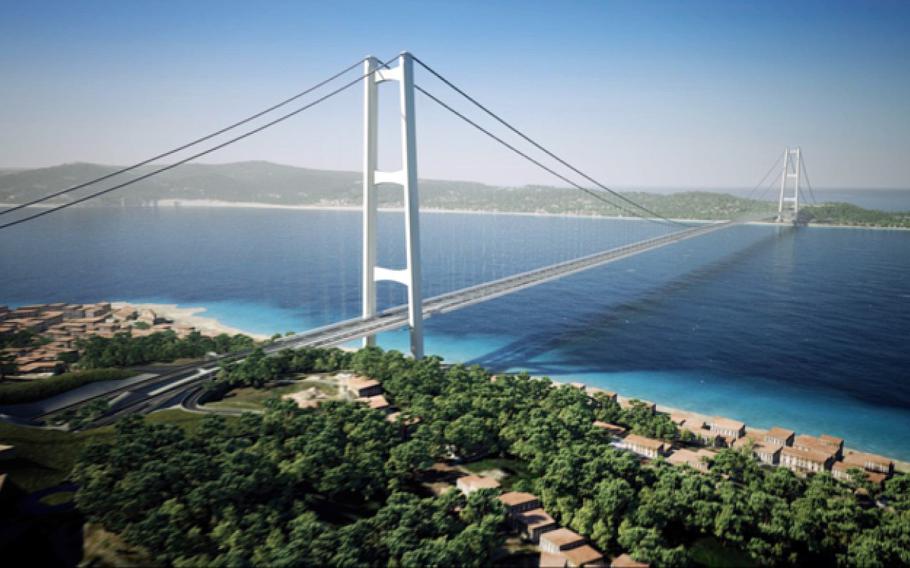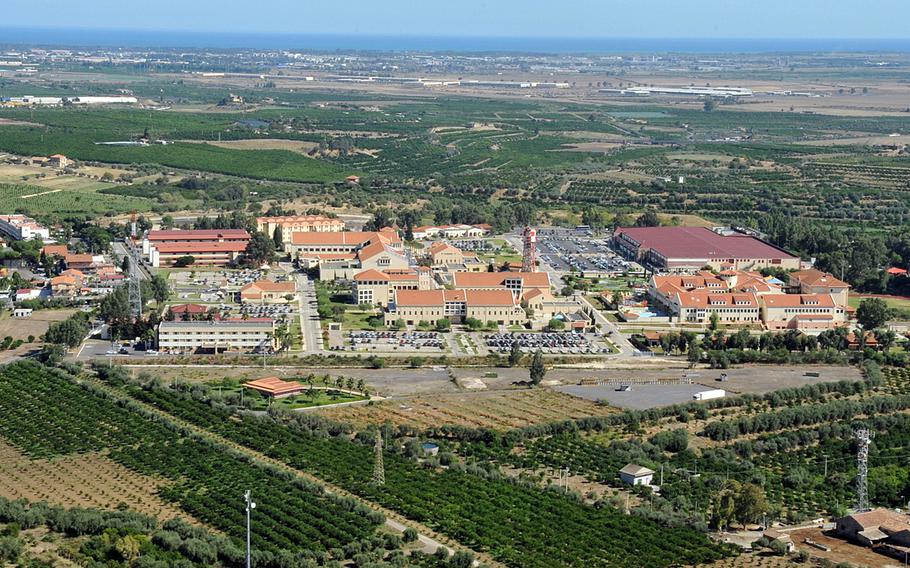
An illustration of a proposed 2-mile suspension bridge connecting Italy's southern mainland to the island of Sicily. Construction is expected to begin this year, with completion expected between 2032 and 2033. (Italian Ministry of Infrastructure and Transport)
NAPLES, Italy — A massive suspension bridge planned to connect Italy’s southern mainland to the island of Sicily not only would ease travel but potentially boost the country’s defense spending, advocates say.
The $15.7 billion project greenlighted by the Italian government earlier this month would span the Strait of Messina from Sicily’s northeast tip to Italy’s Calabria region, according to Italian Ministry of Infrastructure and Transport documents.
Construction on the roughly 2-mile bridge is expected to begin this year, with completion expected between 2032 and 2033.
A bridge likely would save time and money for U.S. service members, civilians and their families assigned to Naval Air Station Sigonella near the Sicilian town of Catania who rely on ferries and planes to reach the mainland. It wasn’t clear how much travelers would be charged to use the bridge.
Italy wants to classify the structure as a military asset so it qualifies as NATO defense spending, The Associated Press reported Aug. 7.
In June, NATO allies agreed to spend 5% of gross domestic product on defense by 2035. While most of that must be spent on core defense, 1.5% can be used on infrastructure, cyber safety and other security measures, NATO said in June.

Naval Air Station Sigonella in Sicily is home to thousands of U.S. service members and NATO nation member troops. A bridge connecting Sicily to the Italian mainland could double as a military asset. (U.S. Navy)
In 2024, Italy spent about 1.5% of its GDP on defense, according to a NATO report last year.
The would-be designation is based on Italy’s contention that the bridge would provide an important corridor for rapid troop movements and equipment deployment to NATO’s southern flanks, qualifying it as “security-enhancing infrastructure,” according to the AP report.
Italian Transport Minister Matteo Salvini confirmed the intention to classify the project as dual use but indicated that the decision would rest with Italy’s defense and economic ministers, AP reported.
Critics have panned the move, suggesting it could create construction hurdles and make the bridge a target.
The project would include six vehicle travel lanes, two rail lines and two service lanes, significantly cutting travel time from the island to mainland Italy, according to the ministry.
A ferry trip takes between 20 minutes and five hours, depending on whether people are traveling by foot, vehicle or train, the time to travel to a ferry location and other factors.
A typical one-way ferry trip for five passengers and a car is about $42, according to carontetourist.it. A one-way flight to Rome ranges from as little as $20 to $171, depending on the airline and other factors, according to the travel search engine skyscanner.com.
Although the bridge has been approved, its construction isn’t guaranteed.
The idea dates to Roman times and the Italian government first asked for proposals in 1969, CBS News reported Aug. 6. The project often has been canceled due to concerns about seismic activity and environmental impacts, among other issues.